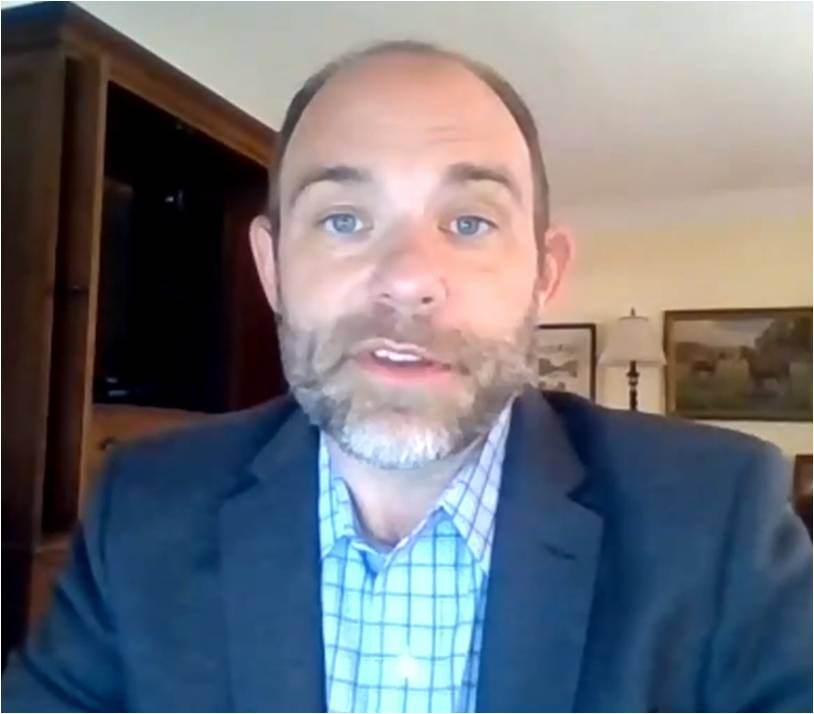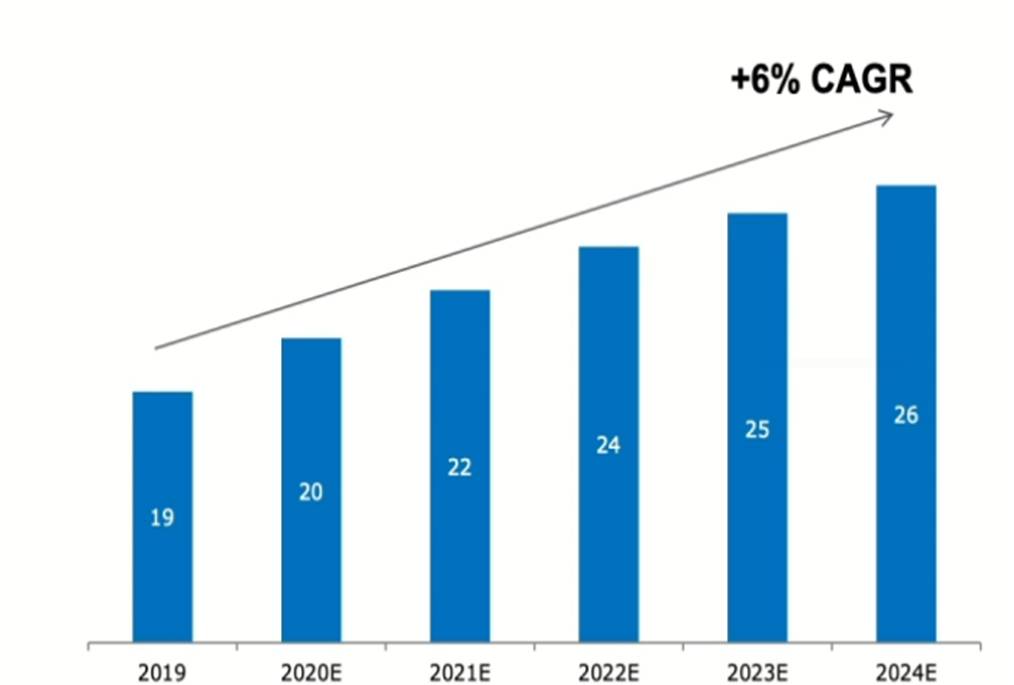Media Economy May Be 'Back to Normal' in 2021, Wells Fargo Analyst Predicts
Television advertising could “see a quick recovery” - especially in the spot market - “if the economic recovery is V-shaped,” Wells Fargo Securities analyst Davis Hebert said Tuesday (June 30) in an outlook on the post-COVID-19 media financial landscape.
Media economics, especially ad sales, should be "back to stability in the fourth quarter and may be back to normal in 2021," Hebert said during the first-ever webcast version of The Media Institute think tank's monthly luncheon in Washington.
But he also acknowledged that the growing use of streaming media - especially producers' direct-to-consumer (DTC) digital platforms such as HBO Max and Disney+ - will rearrange viewers' consumption patterns, with ripple effects on cord-cutting. Indeed, Hebert pointed out that "stackers" - a new breed of consumers who subscribe to three or four digital platforms - are creating their own virtual bundles, which is helping to offset cord-cutting losses to some operators who have content alliances.

"That's where things are going," he said. "Broadband growth should power through any concerns" about video cord-cutting, Hebert added, although he contended that factors - such as the return of sportscasts on broadcast and cable channels - may also curtail cord-cutting.
Also on the positive side for cable operators are cost-saving factors such as self-installation, which have seen growing acceptance during the lockdown. He said he's waiting to see the impact of cable's reach into small/medium businesses - an expanding category, although cable may fail to win business customers if those SMBs stumble themselves during the economic recovery and hence do not sign up for cable broadband service.
Hebert, a frequent speaker at media financial events, also responded to a question about the fate of AT&T's media investments - especially DirecTV - with expectations of further changes in the direct broadcast satellite sector. He spoke from his home near Charlotte, N.C., where he is a Wells Fargo Securities director and senior high yield analyst.
Voicing optimism about ad-supported video-on-demand (AVOD) services, Hebert focused on appealing streaming options such as NBCUniversal's upcoming Peacock and ViacomCBS's Pluto TV as well as the new line-up of studio-backed streaming services, such as HBO Max and Disney+ along with YouTube's AVOD offerings, seeing them continue to "gain traction."
"Digital will continue to grow, but it was already growing at double digits," he said.
Related: COVID-19 Could Squeeze Networks More in Q2
Hebert also expects traditional media to thrive, especially over-the-air broadcasting which has a 6% CAGR over the next four years, according to Wells Fargo estimates. He is monitoring categories such as auto sales, which typically indicate economic recovery. He is also upbeat about the impact of political advertising, especially in the upcoming 3rd and early 4th quarters, which he expects to be vigorous this autumn.

He acknowledged that the forecasts for autumn advertising "are all over the map."
In a lengthy summary of pre-pandemic conditions, Hebert pointed out that the media industry has been seeing "leakage" for a considerable time, which is why "the stock market has not been kind to media companies." He stressed that "the pandemic accelerated the trend...perhaps permanently."
Risk Losing Young Viewers Entirely
Echoing an oft-voiced fear, Hebert warned that traditional media companies "risk leaving a whole generation [of young adults] behind" - audiences under the age of 34. "This is where the world is tilting," he said.
Hebert admitted that the DTC migration "happened much faster than expected."
Asked about the outlook for AT&T and its beleagured media empire, Hebert observed that, "we've seen the strategy change after the Warner acquisition," including retiring of some brands and moving away from DirecTV satellite broadcasting.
"AT&T has had the worst video subscriber losses in the industry," he reminded the online audience. Invited to speculate about future developments such as a DirecTV merger with rival Dish, Hebert quoted Dish founder Charlie Ergen's view that, "It makes a lot of sense." But Hebert acknowledged that such a satellite merger would face lengthy scrutiny, especially if the Democrats take control in Washington in January. He cited the recent two-year ordeal to merge Sprint and T-Mobile as an example of the challenge in eliminating a competitor. He added the prospect of Ergen's effort to get into the terrestrial wireless business and abandoning satellites might further complicate that process.
"There are a lot of hoops to jump through if we ever see consolidation," Hebert said.
Although he cited 5G wireless service as a major factor moving ahead, he characterized it as a "2020 to 2030" development, not an immediate widespread service. "We’ll see investment for a long time.
Multichannel Newsletter
The smarter way to stay on top of the multichannel video marketplace. Sign up below.
Contributor Gary Arlen is known for his insights into the convergence of media, telecom, content and technology. Gary was founder/editor/publisher of Interactivity Report, TeleServices Report and other influential newsletters; he was the longtime “curmudgeon” columnist for Multichannel News as well as a regular contributor to AdMap, Washington Technology and Telecommunications Reports. He writes regularly about trends and media/marketing for the Consumer Technology Association's i3 magazine plus several blogs. Gary has taught media-focused courses on the adjunct faculties at George Mason University and American University and has guest-lectured at MIT, Harvard, UCLA, University of Southern California and Northwestern University and at countless media, marketing and technology industry events. As President of Arlen Communications LLC, he has provided analyses about the development of applications and services for entertainment, marketing and e-commerce.

